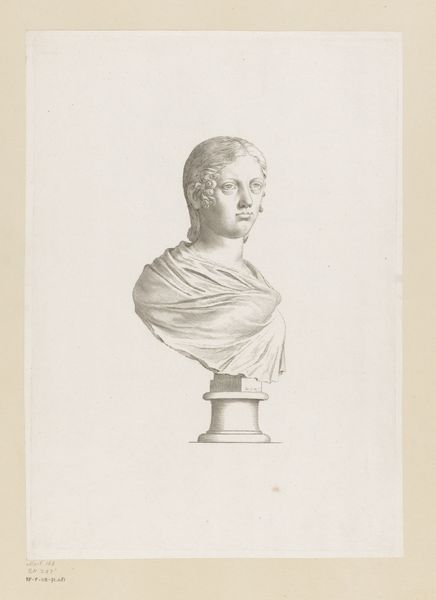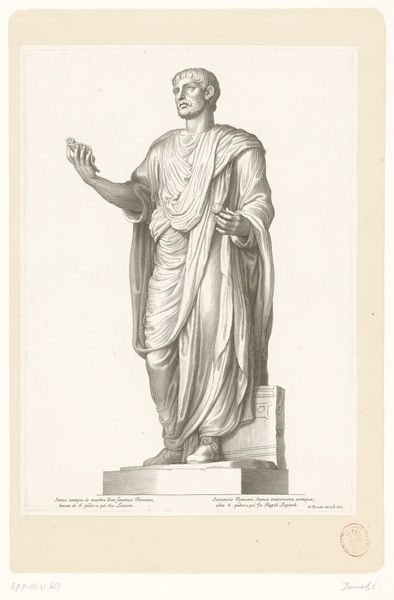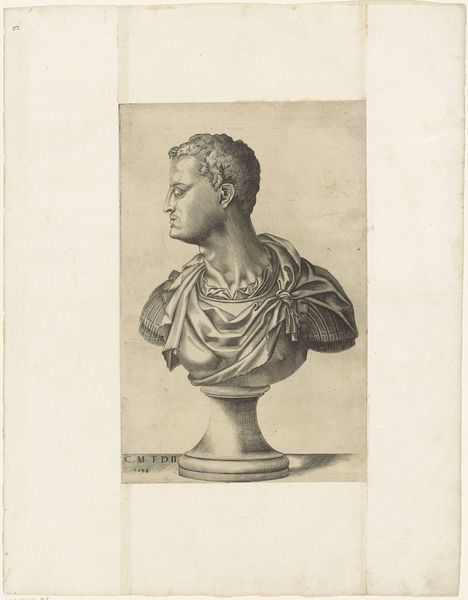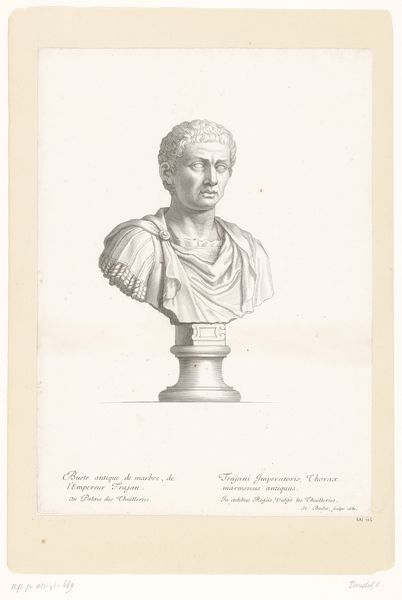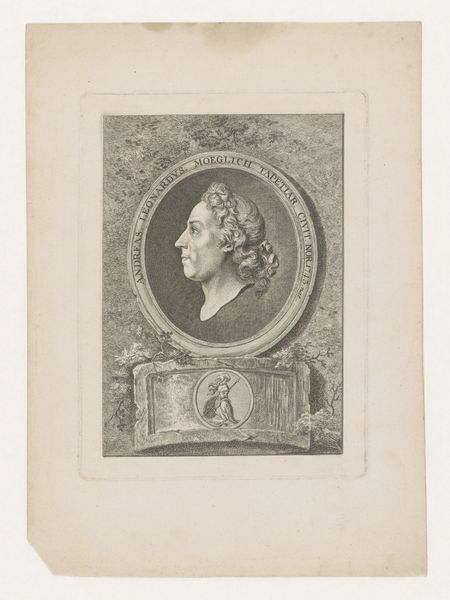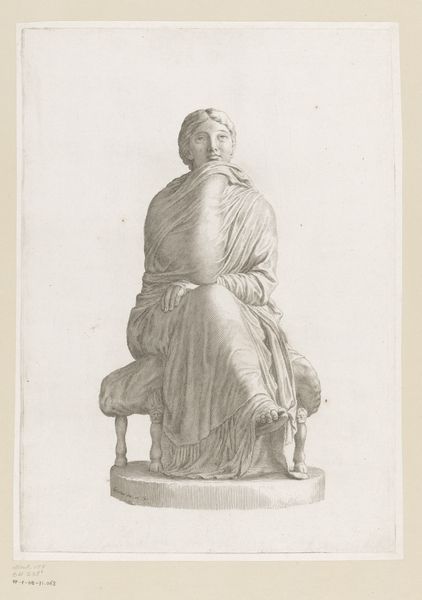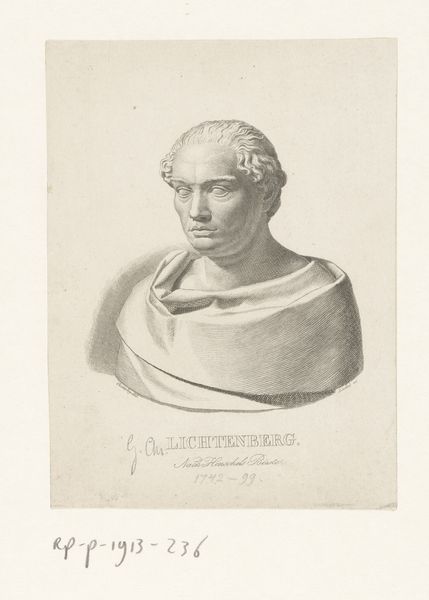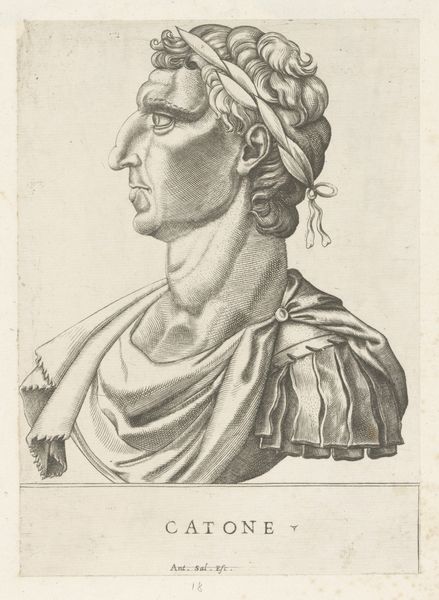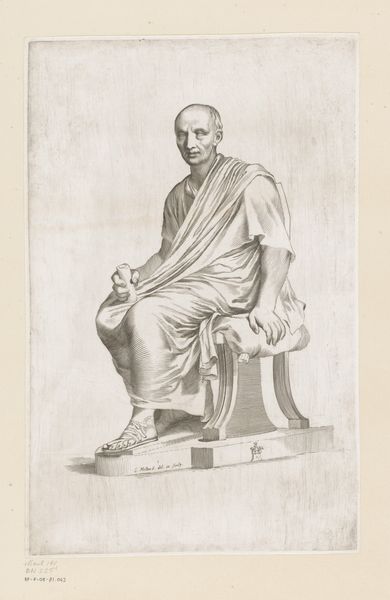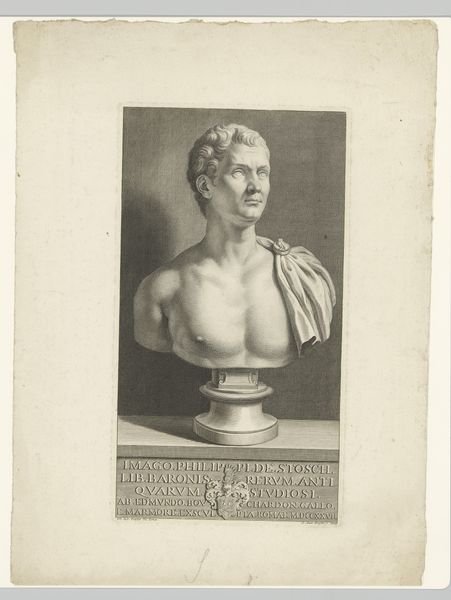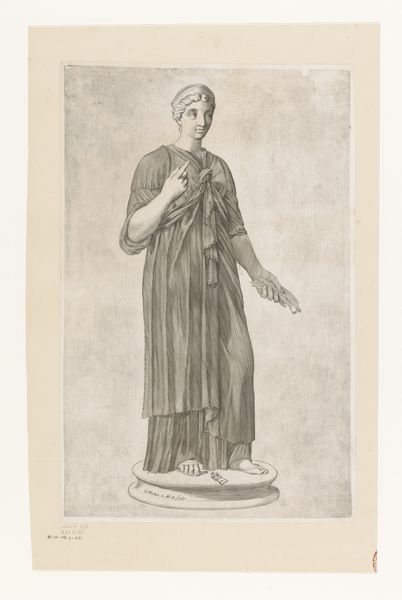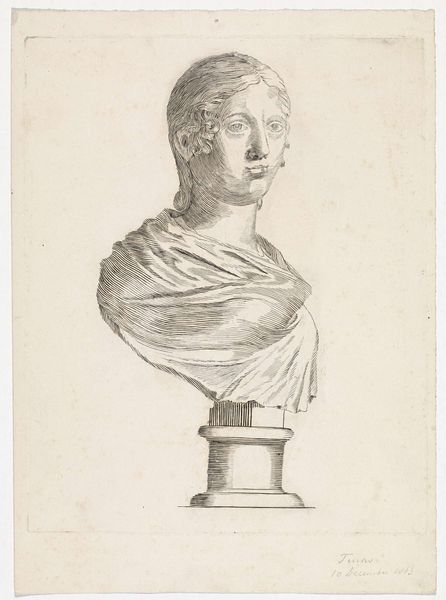
print, sculpture, engraving
#
portrait
#
baroque
# print
#
classical-realism
#
figuration
#
form
#
classicism
#
sculpture
#
line
#
history-painting
#
engraving
Dimensions: height 399 mm, width 288 mm
Copyright: Rijks Museum: Open Domain
Curator: Before us, we have Claude Mellan’s “Beeld van een Romeins senator,” an engraving created sometime between 1670 and 1677. What are your initial impressions? Editor: There’s an almost ghostly quality to it. It feels incredibly precise, almost surgical, in its depiction. Very linear, not much mood until you fix your eyes on the gaze of that man. He looks unimpressed, very cynical, it’s an interesting choice to give that energy to a man from ancient Rome. Curator: Mellan, as a classicist, was fascinated by the contours and purity of form in classical sculpture, which I think he translates adeptly through the medium of engraving. Note how his technical skill uses the bare minimum in strokes and shades to produce an intense sculptural impression, with a perfect display of controlled burin work. Editor: It’s almost mathematical. What I find particularly striking is the contrast. There are deep shadows around his jawline and eyes, but then the rest is incredibly light, almost as if illuminated by divine intervention. Is there a reference to a specific person or story in history behind this, or it more a portrait of an idea? Curator: While titled "Portrait of a Roman Senator," there's no definitive identification linking it to a specific historical figure. It represents the idea of Roman senatorial dignity and perhaps an exploration of power. The Baroque undertones mix strangely with an overriding Neoclassical restraint. The linear precision of the lines defining shape. Editor: Baroque meets classical stoicism. That explains the face. There’s something unsettling about the combination. A frozen moment of fleeting emotion captured with almost sterile precision. Curator: It is definitely a piece that challenges you to consider what makes something both beautiful and haunting. And now, it’s time for us to move on. Editor: Yes, time to face our own portraits in the mirror, hopefully with a little less stoicism.
Comments
No comments
Be the first to comment and join the conversation on the ultimate creative platform.
